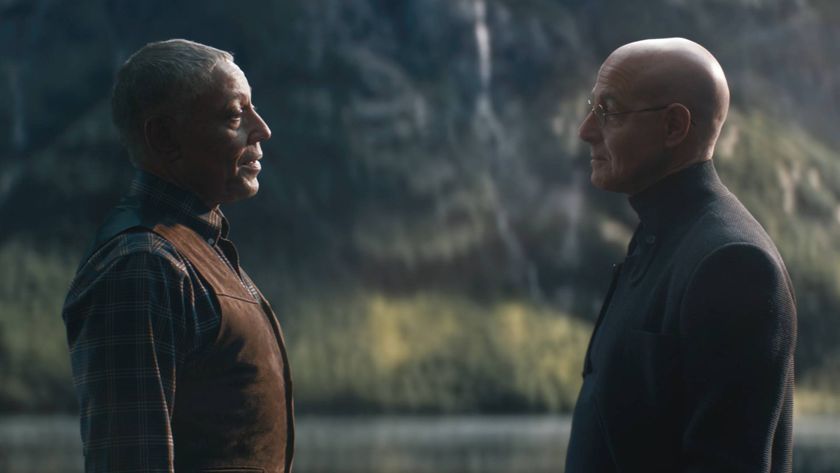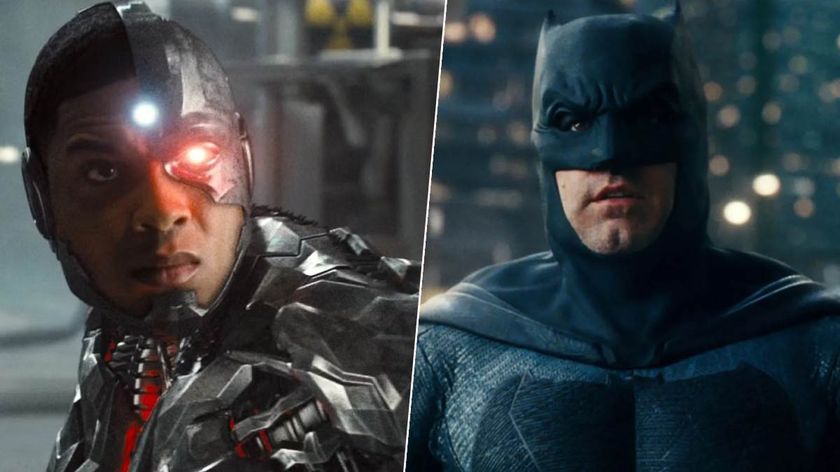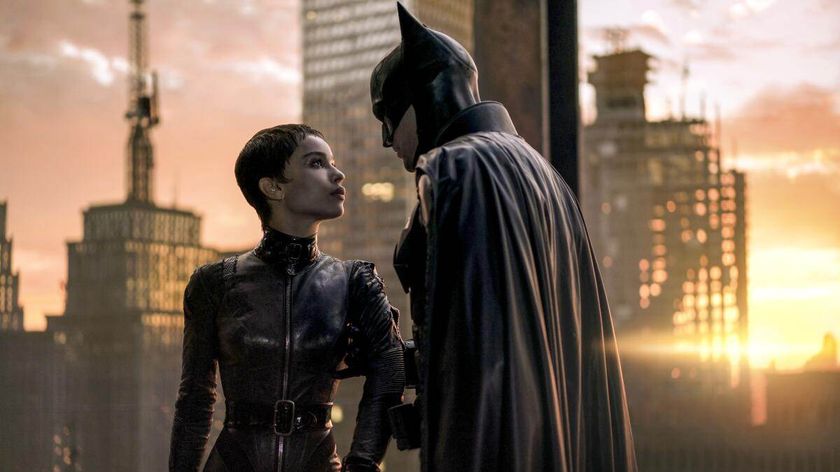The Shawshank Redemption
Darabont's prison melodrama continues to grip hearts and minds
WARNING: CONTAINS SPOILERS!
It landed,” says Frank Darabont, “with a hollow thud at the box office.” But then so did Citizen Kane and It’s A Wonderful Life... The Shawshank Redemption clawed back only $18 million of its $25 million budget. It seemed that, in 1994, audiences just didn’t have the stomach – or the buttock resilience – to head down to the multiplex and spend two-and-a-half hours in the company of some hangdog prison flick with the second-most-unappealing title in movie history (the first being The Hudsucker Proxy, also starring Tim Robbins).
But after seven Academy Award nominations (it won none), the film seeped into the culture via a slowburn word-of-mouth based on TV repeats and video rental (it was the most-rented tape of 1995). Shawshank is always high up in the IMDB Top 250 list, regularly jostling for the number one slot with the likes of The Godfather and Star Wars. It’s a film overlooked and sneered at by reviewers; handed only a grudging acknowledgement on the showbiz back-slap circuit; misunderstood, mispronounced, underestimated... A doe-eyed underdog that quietly padded in from the critical cold to snag the hearts and minds of a broad sweep of real people (suicidal urban teens, buttoned-down Bible-belters, battered ex-cons). It’s a rich and rewarding feel-good movie with such an effortless take on universal themes (despair, hope, injustice, friendship, overcoming adversity, seizing the moment) that it’s become a sort of industry standard for intelligent crowd-pleasers.
Back in 1993, Darabont picked up the rights to his friend Stephen King’s novella, Rita Hayworth And The Shawshank Redemption, for a quick buck. He scribbled a spec screenplay and sent it to the writer. (King: “I thought it was amazing. Just a mind-blowing piece of work.”) Darabont had faithfully adapted King’s story about a wrongly imprisoned man who spends two decades chipping away at a tunnel in his cell – the escape route hidden behind a poster of Rita Hayworth.
His script drew interest from Tom Cruise, Charlie Sheen, Nicolas Cage and Brad Pitt (who had his eye on the role of young firebrand/sacrificial lamb Tommy Williams). But Darabont preferred the cool authority of Morgan Freeman for the role of prison smuggler Red and Tim Robbins for the lead of Andy Dufresne. “He has an enigmatic quality,” says Darabont. “It was perfect, because Andy has to look like he’s hiding this little secret.”
While Robbins prepared by spending some time in solitary confinement, Darabont scouted a creepy, disused reformatory in Ohio to double as austere ’40s state penitentiary Shawshank. The mood was set with an early helicopter shot that soared up and over the mixed Gothic/cathedral stylings of the prison as hundreds of identically overalled inmates crowd towards a van-load of new arrivals (“fresh fish”). With Andy yet to emerge, there’s a hint of unwitting worship, of pilgrims flocking to their future redeemer.
Robbins plays Andy with heart and heft, hitting the perfect note of stoicism and righteous grace (“Everyone’s innocent in here,” says Red, of all the alleged non-sinners). But he’s also firmly one of the people. The turning point, when Andy earns his co-workers a “bottle of suds” with some timely tax advice to a warder, was filmed on an exposed rooftop in 100-degree heat. “In those conditions,” says William Sadler, who played cynical con Heywood, “when someone hands you a cold beer, acting relieved ain’t hard.” As with Million Dollar Baby, Shawshank is a memory tale and Morgan Freeman patents his soulful voiceover with cast-iron integrity, carrying the narration even when it teeters on the edge of cheese.
Sign up for the Total Film Newsletter
Bringing all the latest movie news, features, and reviews to your inbox
Darabont used extended rehearsals to sensitively draw out solid, unmannered performances from a rack of supporting character actors. Bob Gunton is monstrous and Nixon-like as boo-hissable Warden Norton, simmering with easy sleaze, casual corruption and Old Testament hypocrisy (“Put your trust in the Lord. But your ass belongs to me”). Even better is Clancy Brown as Shawshank’s bestial chief enforcer Hadley, a pitbull-tough echo of Full Metal Jacket’s Gunnery Sergeant Hartman, with a similar line in ugly/beautiful outbursts (“What is your problem, you fat barrel of monkey spunk?”).
When he first read Darabont’s script, King thought it would never be made because the novella-sized characters and conventions would seem too corny on a broader, prison-movie canvas (guy who can get things, shower rape, evil warden, birdman...). But with a calm, clear-sighted alchemy, Darabont renders the whole much more than the sum of its hackneyed parts. With just a touch of vaseline on the lens, he transforms what could have been a grim, gloomy and claustrophobic eyeroller into a fertile melodrama – without skimping on the raw, primary qualities (the violence is surprisingly nasty).
Mostly, it works because he keeps it simple. The storytelling is clipped into progressive, digestible chapters: none of your auteur-style narrative juggling here. It’s shot-for-shot, by-the-book structure all the way. Darabont and King – both down-the-line, red-meat-and-Bud types – were made for each other. The Shawshank Redemption is as mainstream as bread and water, but there are moments of transcendence that elevate it to a much higher frequency.
Take James Whitmore as birdman Brooks, who enriches his character’s off-the-peg prison-movie cliché into something more than the standard skeletal stereotype. His sad, dignified, beautifully written and acted suicide speech is the film’s shining moment of classical tragedy (“I’m tired of being afraid all the time. I’ve decided not to stay...”).
Elsewhere, Darabont aims even higher – to the heavens. Andy’s mission is to bring humanity to an inhumane place, and Shawshank’s most iconic moment comes when he locks himself in the prison tannoy room and illegally broadcasts a burst of Mozart, giving his defeated colleagues a fleeting taste of the sublime. It’s a lyrical act of defiance that further emphasises Andy’s divinity and spiritual stamina (“There are places in the world that aren’t made out of stone. There’s something inside that they can’t get to”). It’s easy to read Andy as a Christ figure, particularly from his speech about wanting to live by the ocean which, he says, has “no memory”. He craves to be born again; for a forgiving, non-judgemental, divine force to wipe away his messy history.
The rebirth/resurrection notion extends to Andy’s escape from the entombment of the prison – out through the sewage pipe and back into the world. (Just in case you miss the significance, Darabont has him adopt a cross-shaped gesture up towards the pelting, purifying rain.) It’s a film about stoicism, perseverance and sacrifice, but it’s also full of joy and life and – yep – hope. It’s all about how Earthly friendship and human connection are crucial for the heart, but faith – in whatever form – is good for the soul. That’s why Shawshank has found such a universal audience connection: because it expertly uses a straightforward moral-bound story to carry such weighty baggage. That is pure fairytale.
The Total Film team are made up of the finest minds in all of film journalism. They are: Editor Jane Crowther, Deputy Editor Matt Maytum, Reviews Ed Matthew Leyland, News Editor Jordan Farley, and Online Editor Emily Murray. Expect exclusive news, reviews, features, and more from the team behind the smarter movie magazine.













The Electric State may be the Russo brothers' most challenging VFX project yet, but stars Stanley Tucci and Giancarlo Esposito say it's one of the easiest films they’ve ever done

Stars Stanley Tucci and Giancarlo Esposito say their new dystopian sci-fi movie The Electric State is more like our own reality than we might realize




